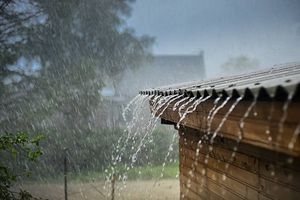MOTORING: The lifespan of various vehicle parts

In answer to predominant and persistent mailbox questions, here comes a summary of how long various parts of your car should last, with occasional hints on what increases or reduces the frequency of failure.
Even in very abbreviated layman’s terms, this process might take more than one week. But let’s get started:
Leaving aside so-called “regular service” items like fuel, oil and air filters, spark plugs and lubricants, the bigger parts that tend to wear out relatively often in a vehicle’s lifetime are the battery, the tyres, the shock absorbers, exhaust pipes and rubber bushes and balljoints (and any other metal-on-metal joint that is not properly lubricated).
Allowing for the variables, if your battery fails in less than one year, it is either sub-standard quality, the wrong capacity, or has been misused or not properly maintained. At the other extreme, if it lasts for more than 5 years all elements of quality, use and maintenance must be very good indeed. A battery life of about 2 years is “normal”.
Tyre wear depends not only on user treatment (pressure, loading, driving style) and road conditions, but also on tread pattern, wheel size and the hardness of the rubber compound used in manufacture.
Chunkier treads wear out (much) faster; big tyres rotate less often per kilometre; harder compounds last longer but give less grip. Balance and alignment are important.
Shocking roads
On a mid-sized family car with 14-inch wheels and standard street tread pattern, if tyres wear from new to nearly bald in less than 20,000km, then usage has been severe; if they last more than 80,000 kms, then usage has been particularly gentle. A lifespan of about 50,000 kms is normal.
Shock absorbers (of standard rating and correct fit) do not “wear out” per se, and if used gently on smooth roads they can last the lifetime of the vehicle, with perhaps a long-term change of the rubber bushes, which can perish over many years.
However, in a mix of road conditions they may require replacement more frequently, as sustained and sometimes extreme punishment on unsmooth roads causes them to partially fail and become weak, or completely fail and leak or break. There can be no “normal” lifespan estimate. If your dampers need regular replacement, either their rating is wrong, or the springs are too weak, or use is severe/abusive.
Exhaust pipes are subject above all to corrosion, and their lifespan will depend on the quality of steel used in manufacture and the prevailing climatic conditions.
At the coast, where the atmosphere is humid and often salty, corrosion can be very rapid. An exhaust can rot in as little as one year. Corrosion is also greater on vehicles which regularly drive on muddy roads - the mud traps moisture next to the metal and promotes faster rusting. The exhaust of vehicles used mostly on tarmac, in dry highland areas, and parked where the underpan will dry rapidly and remain well aired, can last for a decade or more. The integrity of exhaust mountings is also a factor. Daily Nation.
Email: life&[email protected]




